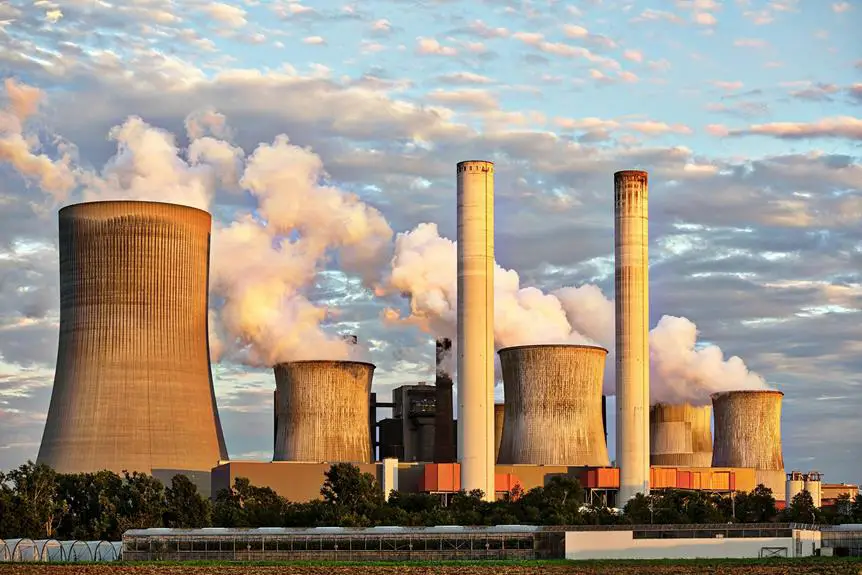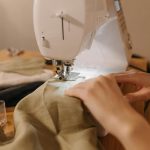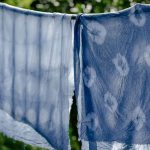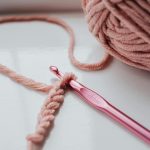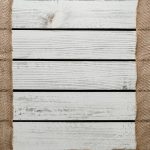You might not realize it, but the production of cambric fabric carries a hefty environmental price tag. From the extensive water usage in cotton farming to the harmful chemicals that seep into our ecosystems, the impact is far-reaching. As you explore the intricacies of this fabric's lifecycle, you'll uncover not just the challenges but also potential sustainable practices that could make a difference. What innovative solutions exist to minimize these impacts, and how can they reshape the future of textile production?
Table of Contents
Overview of Cambric Fabric
Cambric fabric, known for its lightweight and crisp texture, is a finely woven cotton material that's often used in clothing and home textiles. You might appreciate its soft feel and breathability, making it a popular choice for summer garments like blouses and dresses. Its fine weave lends itself well to delicate embroidery, enhancing the aesthetic appeal of various products.
One of the key characteristics of cambric is its durability. Despite its lightweight nature, it stands up well to regular use, which is why you often find it in everything from table linens to bed sheets. The fabric's smooth finish also allows for vibrant printing and dyeing, making it a versatile option for designers.
When you touch cambric, you can feel the crispness that sets it apart from heavier cotton fabrics. This quality allows for a tailored look, which is why it's frequently used in formal wear. You may also notice that cambric can be easily ironed, maintaining its neat appearance over time.
Raw Material Sourcing
When it comes to cambric production, sourcing raw materials plays a crucial role in its environmental impact.
You'll want to consider sustainable fiber sources and how they can help mitigate issues like deforestation and land use changes.
Understanding these factors is essential for making informed choices about the fabric you use.
Sustainable Fiber Sources
Sourcing sustainable fibers is crucial for reducing the environmental footprint of fabric production. By choosing materials that have a lower impact on our planet, you can play a significant role in promoting eco-friendly practices. Sustainable fibers often come from renewable sources, which helps preserve our natural resources.
When considering sustainable fiber sources, keep these factors in mind:
- Organic Cotton: Grown without harmful pesticides or synthetic fertilizers, organic cotton supports biodiversity and soil health.
- Tencel (Lyocell): Made from sustainably sourced wood pulp, Tencel is produced in a closed-loop process, minimizing waste and chemical use.
Deforestation and Land Use
Choosing sustainable fibers can significantly mitigate the risks of deforestation and land use changes associated with raw material sourcing. When you opt for eco-friendly materials, you're directly supporting practices that protect forests and biodiversity. Traditional cotton farming, for example, often leads to extensive land clearing, displacing wildlife and disrupting ecosystems. By selecting organic cotton or alternative fibers like hemp, you help reduce the pressure on these vital habitats.
It's crucial to understand the impact of your choices. Sustainable fibers typically require less water and fewer chemicals, which means healthier soil and less pollution. Additionally, these practices promote crop rotation and agroforestry, which can restore land rather than degrade it.
When you choose brands that prioritize sustainable sourcing, you're not just making a personal decision; you're contributing to a broader movement toward responsible land use. Every purchase you make sends a message about the kind of world you want to support.
Water Consumption in Production
Cambric production demands significant water resources, impacting local ecosystems and communities. When you consider the entire process, from cotton growth to fabric finishing, you'll see that vast amounts of water are consumed at each stage. This high demand can strain local water supplies, leading to competition among agricultural, industrial, and residential users.
Here are some key aspects to consider:
- Depletion of Water Sources: Over-extraction for cambric production can lead to lower water tables, affecting drinking water availability for local residents.
- Altered Ecosystems: Excessive water usage can disrupt nearby rivers and wetlands, harming wildlife and plant life that depend on these ecosystems.
Chemical Use and Pollution
Often overlooked, the chemical processes involved in cambric production significantly contribute to environmental pollution. You mightn't realize it, but the dyes, bleaches, and finishing agents used in this textile manufacturing can release harmful substances into the environment. These chemicals often contain toxic compounds, which can contaminate local water sources and soil, affecting both wildlife and human health.
When you consider the scale of cambric production, the volume of chemicals used is staggering. Many manufacturers use non-biodegradable substances that linger in the ecosystem long after the production process is complete. As these chemicals leach into water systems, they can disrupt aquatic life, alter ecosystems, and harm drinking water supplies.
Furthermore, improper disposal of chemical waste from cambric production can lead to severe pollution. If manufacturers cut corners to save costs, you're looking at the potential for hazardous materials to be released into the environment.
Supporting brands that prioritize eco-friendly practices can help mitigate this issue. By being informed and making conscious choices, you can contribute to reducing the harmful impacts of chemical use in cambric production.
Carbon Footprint of Manufacturing
When you consider the carbon footprint of cambric manufacturing, energy consumption levels play a crucial role.
You'll want to explore how efficient energy use can significantly lower emissions.
Additionally, examining emission reduction strategies can help identify ways to minimize environmental impact.
Energy Consumption Levels
The production process of cambric significantly contributes to its overall carbon footprint due to high energy consumption levels. Manufacturing cambric involves various stages, each requiring substantial energy inputs.
As you consider this, it's essential to recognize the factors that drive energy consumption in this industry:
- Machinery Operation: The use of heavy machines for weaving, dyeing, and finishing processes consumes a lot of electricity, increasing the carbon footprint.
- Heating and Cooling: Maintaining optimal temperatures in production facilities demands significant energy, especially during dyeing and finishing, where precise conditions are crucial.
Emission Reduction Strategies
To mitigate the high energy consumption levels in cambric production, manufacturers can adopt various emission reduction strategies that target the carbon footprint of their operations.
First, you can switch to renewable energy sources like solar or wind power. This transition not only lowers greenhouse gas emissions but also stabilizes energy costs over time.
Next, implementing energy-efficient machinery and processes is crucial. By investing in modern equipment that consumes less energy, you'll reduce emissions significantly. Regular maintenance of machinery also ensures they operate at peak efficiency, minimizing wasted energy.
Another effective strategy is to optimize production processes. Streamlining operations can reduce waste and energy consumption, leading to a smaller carbon footprint. You can also consider adopting circular economy principles, recycling materials, and reducing reliance on virgin resources.
Engaging employees in sustainability initiatives fosters a culture of environmental responsibility. Training staff to identify energy-saving opportunities can lead to innovative solutions that collectively reduce emissions.
Lastly, monitoring and reporting emissions regularly helps you track progress and adjust strategies as needed. By taking these steps, you'll play a crucial role in minimizing the environmental impact of cambric production while enhancing your brand's sustainability profile.
Waste Management Challenges
As cambric production ramps up, manufacturers face significant waste management challenges that can impact both the environment and their operational efficiency. You mightn't realize it, but the sheer volume of waste generated during production can overwhelm existing disposal systems. Many manufacturers struggle to find effective ways to handle this waste, leading to increased environmental degradation and potential regulatory issues.
The following waste management challenges are critical to address:
- Material Loss: A significant amount of raw materials becomes waste due to inefficiencies in the production process.
- Chemical Disposal: The use of dyes and chemicals can create hazardous waste that must be properly managed to prevent soil and water contamination.
Sustainable Alternatives and Practices
Exploring sustainable alternatives and practices in cambric production can significantly reduce environmental impact while enhancing efficiency. One effective approach is switching to organic cotton. By choosing organic fibers, you're supporting farming methods that avoid harmful pesticides and fertilizers, promoting healthier ecosystems.
You can also consider using recycled materials. Many manufacturers are now producing cambric from post-consumer waste, minimizing the need for virgin resources and reducing landfill waste. This not only decreases environmental degradation but also conserves energy.
Implementing water-saving technologies is another crucial step. Techniques like rainwater harvesting and efficient irrigation systems can greatly reduce water usage in production. You'll find that these practices not only lower your water footprint but also cut costs.
Frequently Asked Questions
What Are the Origins of Cambric Fabric?
Cambric fabric originated in the 16th century in Cambrai, France. You'll find it was initially made from fine linen, prized for its softness and lightweight nature, later evolving to include cotton blends for added durability.
How Does Cambric Compare to Other Fabrics Environmentally?
When you compare cambric to other fabrics, you'll notice it generally requires less water and fewer chemicals. However, it's essential to consider sourcing and production practices, as those can significantly affect its overall environmental impact.
What Is the History of Cambric Production?
Cambric's history dates back to the 16th century in France, where it was initially handwoven from linen. Over time, its production spread across Europe, evolving with industrial techniques, making it a popular fabric choice for various applications.
Are There Any Certifications for Sustainable Cambric?
Yes, you'll find certifications like Global Organic Textile Standard (GOTS) and OEKO-TEX that ensure sustainable cambric production. These certifications guarantee eco-friendly practices, helping you make informed choices when purchasing sustainable textiles.
How Does Consumer Behavior Impact Cambric Production?
Your choices as a consumer directly shape cambric production. When you prioritize sustainable options, manufacturers respond by adopting eco-friendly practices. By supporting responsible brands, you encourage a market that values sustainability, ultimately influencing production methods.
- How to Style Gabardine Cargo Pants for a Utilitarian Look - June 24, 2025
- Max Mara and the Cotton Gabardine Trench: A Timeless Investment - June 24, 2025
- A Review of the Theory Gabardine Trench Coat for Modern Minimalists - June 24, 2025

